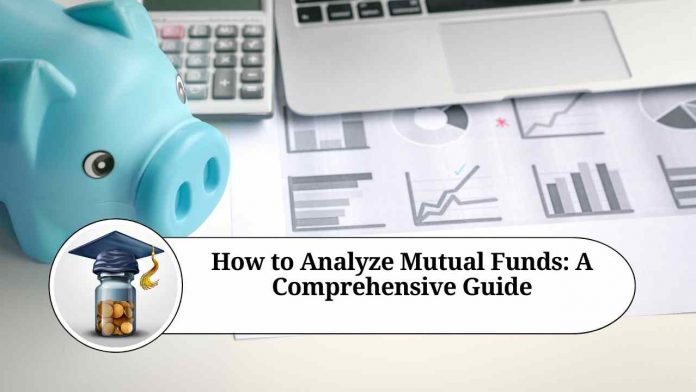Mutual funds are a popular investment vehicle for individuals who want to diversify their portfolio and achieve their financial goals. But with so many mutual funds available, choosing the right one can be overwhelming. To help you make informed investment decisions, we’ve put together a comprehensive guide on how to analyze mutual funds.
Performance
The first and most important factor to consider when analyzing a mutual fund is its performance. This includes both past performance and future potential. Look at the fund’s returns over the last 1, 3, 5, and 10 years, and compare them to its benchmark index. Keep in mind that past performance is not a guarantee of future results, so consider the fund’s investment strategy and the current market conditions when evaluating its potential.
Expense Ratio
The expense ratio is the fee that the fund charges for managing your investment. It’s important to keep this cost low, as it can eat into your returns over time. Look for funds with expense ratios below 1%, and compare them to other funds with similar investment strategies to ensure you’re getting a good deal.
Investment Strategy
Each mutual fund has a unique investment strategy that dictates the types of assets it invests in. Consider whether the fund’s investment strategy aligns with your financial goals and risk tolerance. For example, if you’re looking for a conservative investment, a fund that focuses on high-risk, high-reward stocks may not be the best fit.
Portfolio Composition
Take a closer look at the fund’s portfolio composition to understand the types of assets it holds. This can include stocks, bonds, cash, and other investment vehicles. Consider whether the fund’s asset allocation aligns with your investment goals and risk tolerance.
Fund Manager
The fund manager plays a crucial role in the success of a mutual fund. Look at the manager’s track record and experience, as well as their investment philosophy and approach. If the fund has had multiple managers in recent years, consider why and whether it may impact its future performance.
Risk vs Reward
Every investment carries some level of risk, and mutual funds are no exception. Consider the fund’s risk vs. reward profile to determine whether it aligns with your investment goals and risk tolerance. Look at the fund’s volatility and drawdowns, as well as its potential for long-term returns.
Fund Size
Finally, consider the size of the mutual fund. Larger funds may offer more stability and liquidity, but they may also be more difficult to manage and have lower potential for growth. Smaller funds may be more nimble and offer higher potential returns, but they may also carry more risk.
Conclusion
Analyzing mutual funds requires a comprehensive approach that considers a variety of factors, including performance, expense ratio, investment strategy, portfolio composition, fund manager, risk vs. reward, and fund size. By taking these factors into account, you can make informed investment decisions that align with your financial goals and risk tolerance.
Read more useful content:
- How to invest in mutual funds
- All about mutual funds-types & importance
- The Power of SIP Investment in Mutual Funds
Frequently Asked Questions (FAQs)
Q. What is the most important factor to consider when analyzing a mutual fund?
The most important factor to consider when analyzing a mutual fund is its performance. This includes both past performance and future potential. Look at the fund’s returns over the last 1, 3, 5, and 10 years, and compare them to its benchmark index. Keep in mind that past performance is not a guarantee of future results, so consider the fund’s investment strategy and the current market conditions when evaluating its potential.
Q. How do I evaluate a mutual fund’s expense ratio?
The expense ratio is the fee that the fund charges for managing your investment. To evaluate a mutual fund’s expense ratio, look for funds with expense ratios below 1%, and compare them to other funds with similar investment strategies to ensure you’re getting a good deal.
Q. What should I consider when looking at a mutual fund’s investment strategy?
When looking at a mutual fund’s investment strategy, consider whether it aligns with your financial goals and risk tolerance. For example, if you’re looking for a conservative investment, a fund that focuses on high-risk, high-reward stocks may not be the best fit.
Q. How do I evaluate a mutual fund’s portfolio composition?
To evaluate a mutual fund’s portfolio composition, take a closer look at the types of assets it holds. This can include stocks, bonds, cash, and other investment vehicles. Consider whether the fund’s asset allocation aligns with your investment goals and risk tolerance.
Q. How important is the fund manager when analyzing a mutual fund?
The fund manager plays a crucial role in the success of a mutual fund. Look at the manager’s track record and experience, as well as their investment philosophy and approach. If the fund has had multiple managers in recent years, consider why and whether it may impact its future performance.
Q. How do I assess the risk vs. reward profile of a mutual fund?
To assess the risk vs. reward profile of a mutual fund, look at its volatility and drawdowns, as well as its potential for long-term returns. Consider whether the fund’s risk vs. reward profile aligns with your investment goals and risk tolerance.
Q. Does the size of a mutual fund matter when analyzing it?
The size of a mutual fund can impact its stability, liquidity, and potential for growth. Larger funds may offer more stability and liquidity, but they may also be more difficult to manage and have lower potential for growth. Smaller funds may be more nimble and offer higher potential returns, but they may also carry more risk. Consider the size of the fund when evaluating it, but also take into account its other characteristics.




















